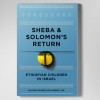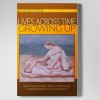Szajnberg, N.M. (2012). Zombies, Vampires, Werewolves: An Adolescent’s Developmental System for the Undead and Their Ambivalent Dependence on the Living, and Technical Implications. Psychoanal. Rev., 99:897-910.
Abstract:
While vampires haunt contemporary American pop culture, the undead have populated psychoanalytic literature from Abraham’s letter to Freud (1915) to today. PEP lists 439 psychoanalytic references to the undead (99 on Zombies; 288 on Vampires; 52 on Werewolves). We can cite only a selection of papers focusing on clinical cases (Kayton, 1972; Szajnberg, 1993; Olesker, 1999), ethnography media and literature, (Roheim, 1953; Chasseguet-Smirgel, 1984), even breast-feeding fantasized as blood sucking, associated with primitive dynamics (Almond, 2007). We summarize the previous works’ libidinal, object relations and dynamic perspectives on various undeads. Intriguingly, popular culture recognizes what is common to the undead: they can’t “not-live” without humans. In the U.S., the undead have a “rampaging presence on best-seller lists and movie and television….” (Isherwood, New York Times, 2011)
But no psychoanalytic paper has looked at the relationship of the three categories of undead both among each other and their relation to the living. This paper presents a young adolescent’s extensive play and fantasies about the undead, and ultimately, his explanation of how zombies, vampires and werewolves are developmentally related to each other and consequently have different relationships to the living. Prior to treatment, this boy developed a sophisticated intrapsychic model for the undead that both kept him in psychical equilibrium, yet also kept him from feeling alive.
This boy’s insights about the undead and the dead has developmental implications for handling three types of transferences. Also, we may shed light on both contemporary preoccupation with the undead in contemporary American popular culture, and its endurance over time in Western culture.
While vampires haunt contemporary American pop culture, the undead have populated psychoanalytic literature from Abraham’s letter to Freud (1915) to today. Psychoanalysts have written voluminously about not only blood-sucking vampires, but also flesh-feasting werewolves and zombies: PEP lists 439 references to the undead (99 on Zombies; 288 on Vampires; 52 on Werewolves). We can cite only a selection of papers focusing on clinical cases (Kayton, 1972; Szajnberg, 1993; Olesker, 1999), ethnography media and literature, (Roheim, 1953; Chasseguet-Smirgel, 1984), even breast-feeding fantasized as blood sucking, associated with primitive dynamics (Almond, 2007). In fact, popular culture recognizes the undeads’ need for the living: they can’t “not-live” without humans. As for popular culture, they have a “rampaging presence on best-seller lists and movie and television….” (Isherwood, New York Times, 2011)
But no psychoanalytic paper has looked at the relationship of the three categories of undead both among each other and in relation to the living. This paper benefits from a young adolescent’s extensive play and fantasies about the undead, and ultimately, his explanation of how zombies, vampires and werewolves are developmentally related to each other and consequently have different relationships to the living. Prior to treatment, this boy developed and built an intrapsychic model for the undead that both kept him in psychical equilibrium, yet also kept him from feeling alive.
This boy’s insights about the undead and the dead has developmental implications for handling three types of transferences, and may shed light on both contemporary popularity (even preoccupation) with the undead in contemporary American popular culture, and its endurance over time in Western culture. Paraphrasing Mark Twain on the weather: while many complain about the undead, no one is doing much about them. This boy could do something about the undead in his inner life –transform them into living — through psychoanalysis.
Case Report:
- was seen in psychoanalysis from twelve and half to almost sixteen years old. His severely obsessional symptoms included having to toss and catch a pencil by its point thirteen times before he could write a single letter, which then had to be written directly on the line, or it had to be erased; paper had to be clear of smudges before writing. (He dispatched his father for fresh reams of paper for homework.) An outstanding athlete, he had secret rituals, such as drawing sequences of numbers in the mound with his toe before pitches. While he excelled in sports, his parents noted that he took no playful pleasure.
His symptoms became overt following an accident in which his cousin was paralyzed after a head injury. (The cousin regained some functioning over time.) Other possible precipitants include his father’s collapse with chest pain (diagnosed as anxiety), his mother’s collapse in a tennis match and his only brother’s move to college in the months prior to presentation. D. began running almost incessantly at home (allegedly to improve his speed on the basketball court and as quarterback), pounding up and down stairways while basketball dribbling, which eventually continued beyond midnight. He developed sleep-onset insomnia. He erupted in startles and jerks, which precipitated his pediatric hospitalization. Both thyrotoxicosis and pheochromocytoma were in the differential diagnosis, based on history and presentation: no medical conditions were found. Tourette’s was also considered. All somatic symptoms resolved in the first six months of psychoanalysis.
For this paper, the central play about the undead occurred in the first eight months of work. Initially, after a frozen beginning, in which he sat tensely, kneading his fists in the hem of his t-shirt, denying the need for treatment, he leaped from his seat across the room landing on his knees poking his head into the dollhouse, and demanding “What’s going on in here?” He initiated elaborate play involving a Superbaby, its mother, father and siblings. The basic theme, with multiple variations over the following months, was that in an initially “normal” looking house, things get strange: father drives home, then into the second floor window and parks the car in the bedroom. Mother is cooking dinner and sends father fishing, which he does in the toilet. Superbaby comes to life to save the family, or repair matters. In the end, mother prepares an elaborate meal: then, she serves Superbaby as the main dish in the center of the table. Superbaby would come back to life and the “play” would start over, feeling at times, numbingly never ending, as Terr shows in the traumatized children of Chowchilla (Terr, 1994). The analyst’s major tasks were to articulate the mimed play and to wonder what was going on or why something happened. D. resisted attempts to relate this to any sense that he felt he needed to be “super” to save his family and that, even though super, he was vulnerable.
Vampire, werewolf, zombie play was next. In contrast to the dollhouse play, where D. silently played-out the scenes and permitted the analyst to comment from what Anthony called the sessile position (Anthony, 1977), now, D. involved the analyst more actively. D. told the analyst that he and his stuffed animals were werewolves; D. was a vampire and D. adopted the analyst’s baby (girl) doll as his vampire child. D. laid out the plot line. He directed the analyst when to stand, how to throw (Nerf) bombs at the babies, when to sit in this chair and suffer bombardment by D. vampire or vampire baby. The play had a driven, repetitive quality, but developed over months. Initially, D. would throw the Nerf ball at the analyst/werewolf to kill him and insist that the analyst retaliate with the Nerf ball to kill the D./vampire. D. aimed for the analyst’s head and face. Should one of us succeed in blowing up the other, D. pointed out that as undeads, we would come back to “life” in order to battle again. Then, he added the analyst’s stuffed animals and dolls into the play. The animals were the analyst’s werewolf babies; D. adopted one baby doll, removing all her clothes, to be his Vampire baby. Now, our aim was to kill each other’s babies. His baby, he explained wore a body mask so that it looked as if it were human. He held his baby aloft, taunting the analyst to shoot. If the analyst did not aim well, D. became enraged, bombarding the analyst and his werewolf babies with Nerf bombs and insisting that the analyst aim better. Much of this was done with little facial emotional expression in D.; his face was deadened, mask-like. Then, the game evolved. D. or his baby would kidnap one of the analyst’s werewolf children and hold it aloft. D. commanded the analyst to bomb his child, or D. would slowly and painfully kill it by strangulation, suffocation or torture. If the analyst hesitated or begged to let his baby live, D. and his vampire baby would crush the analyst’s baby with a look of cold glee, or a smirk and twirling his imaginary moustache, like Snidely Whiplash. If the analyst insisted he couldn’t throw the ball, D. sent a “force” into the analyst that D. said would make the analyst shoot the bomb. If misaimed, D. insisted he keep trying. If the analyst shot the bomb (and D. aided poor aim by moving the baby into the bomb’s path), and killed the baby, the analyst expressed remorse, regret, sadness. When the analyst said that he didn’t want to do it, that the force put into him by D. “made him do it,” D. responded dismissively, even with a look of contempt, “You pulled the trigger.” D. listened to interpretive attempts such as that the analyst felt how D. might have felt at times: forced to do something uncontrollably destructive towards someone he loved; feeling regret, remorse and guilt afterwards. D. now tolerated such comments, then insisted on resuming play. Confirmation came in the aforementioned shifts in play, including D.’s face becoming alive with emotional expression.
It was only months later that the analyst could ask D. about the vampire and werewolf that D. gave the following discourse over several weeks. He explained that zombies, vampires and werewolves were related but different. They shared three characteristics. 1. None could be killed. 2. All depended on eating humans in order to stay “alive.” 3. None could ever become human.
How did they differ? Zombies were the lowest form of the undead: they had no will, were almost robotic (he demonstrated mechanical, frozen jointed, masked-face walk) and had no feelings about eating humans. Vampires were a higher form. They had the will do what they did; they drank blood to sustain themselves, but also gave the (ambivalently) desired “gift” of undeadness to their victims. Vampires too had no remorse over killing people. Werewolves were the highest form of undead. They appeared human for most of the month. Only at the full moon did they turn into wolves, then lose control and eat humans. And, Werewolves felt terrible remorse the next day, after the fact, perhaps a form of après coup. Further, they often “knew” what they had done only by a memory or seeing the evidence of blood or shredded clothes on themselves. They suffered the entire month anticipating what they would do so wrong. That is, temporally, werewolves felt past remorse and future anxiety.
As treatment progressed, D. now took on the analyst’s role of werewolf. He explained that his baby (or he) became a good or bad werewolf on their birthdays. But, he could never predict whether he would be good or bad for the coming year. Further, he explained that his zombie or werewolf didn’t piss or shit: it ate and spit out whatever was disgusting. It had no anus or penis to evacuate itself. That is, his self-representation of babyhood had but one erogenous zone, a more primitive state (Winnicott, 1971).
D.’s treatment continued with greater symbolic representation over the next few years (Szajnberg, 1993) shifting to drawing, dreaming, recounting movies and books and even singing pop songs, such as “Cupid, draw out your bow/and make your arrow flow/straight to my lover’s heart if you please”. While a full account of his treatment goes beyond the needs of this paper, some samples of his dreams suggest his intrapsychic shifts.
His dreams restructured over the course of treatment from grimness and passivity in the face of death, to escaping alone, to buddying-up to escape mayhem (Szajnberg, 2010). In his first dream (session #13), he was in an amusement park with friends. A murderer pursues them. D. runs into a house alone for safety, but the murderer is hiding behind the door. He grabs D. and tries to put him on a lumber saw, head-first. D. runs away.
His only association was to a “blind-eyed” ostrich that could still run; while blind, its legs still worked to get away from danger.
Towards the end of the first year, he dreamt of seeing a dead woman in a park with wet leaves over her, covering her. He hears the words, “Esse, Esse”.
He goes home and finds the dead woman in the bath tub. He awakens. This dream he found quietly terrifying and wanted to know how to forget it. He wanted to dump the dream in my office and leave it there. The “Esse, Esse,” German for “eat, eat” occurred during his Vampire/Werewolf play, consistent with the oral aggressive and cannibalistic quality of the play, but with a reversal: in this dream, a voice tells the living D. to eat a dead corpse (placing him closer to a Zombie, in his view). This captures the grimness of this boy’s psychic structure built over the years prior to treatment. We can understand this dream in terms of Green’s dead mother,
of course, but as we will see in the next phase, the maternal transference was also murderous: the undead, after all, are cannibalistic killers.
One pivotal piece of work occurred in the eighteenth month of treatment. Just prior to the following key session, he had spent several months talking about how the praying mantis mother eats the head of the father after he impregnates her and playing “Black Widow.” Outside session, he rode a Black Widow roller coaster in a counterphobic manner. He then spent weeks weaving webs in the analyst’s office, unrolling yards upon yards of Scotch tape: beginning from the door knob, the tape wound throughout the room, finally encasing the analyst in his chair, while D. demonstrated how he as the spider could maneuver around the room without getting stuck by the web, but moving closer and closer to the analyst.
Then, he recalled the following in a quiet manner in the office. His mother tried to strangle him on his seventh birthday when his parents had a brief separation. (This account was confirmed both by mother and later by father, whom the boy telephoned after escaping his mother’s grasp. When his older brother heard of the episode, he responded dismissively, “Oh, yeah, she did that to me once.”) That is, the cannibalistic praying mantis, or murderous black widow not only destroys the father, but also tries to choke the son.
After discussing this over several weeks, he further elaborated play, including references to movies such as “Indiana Jones.” According to D., Indiana could not see how much the boy cared for him, since Indy was preoccupied with the “blond bombshell’s boobs” (not just the antidote lying between them). His play and work become much more representational and symbolic, such as demonstrating while the analyst stood still, how he had seen the Rockettes dance so closely to around other, without touching and smiling at each other all the time.
In his third year of work, he dreamt the following, which gives a sense of how his inner structures had developed. He is fighting in Viet Nam and successfully escapes running through a land mine field, jeopardizing his legs. He and a friend swim a river, then must scale a wall to escape. D. climbs successfully; his friend has trouble. A helicopter pursues them, shoots missiles, but misses. The two now are safely on the other side of the wall and meet twins who become their girlfriends. All four enter an elevator that goes down to the future. They arrive safely in the year 2000. (The treatment took place in the late 1980’s).
We talked about finding someone in his dream with whom he can escape and “helping” his friend escape. (In the dream, the friend has trouble scaling the wall; yet, he dreams the friend and he both on the other side of the wall.) We talked of how neat it would be to have twin girl friends. He could accept an interpretation that while the past was scary and dangerous, he sees himself in a future that is safer and with friends, even a girl friend. For D., this was a way in which he could save his father from suicidal depression and find girls for both of them. (The suicidal depression was confirmed in the third year, when the father met with the analyst for a referral to analysis: father presented an elaborate plan to kill himself in a clever manner, so that his son could still get the life insurance.) We can understand the “down” to the future as a form of his regressing in treatment in order to have a better future (Kris, 1956).



